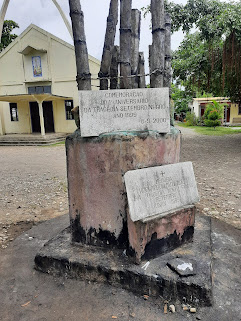How do we learn business? Some do it in business schools, some learn it from parents, some do it by being in business, and some learn it by sheer grit. I had seen money lenders visiting my family, taking away some hard earned money as part payment against the money that my father had borrowed. Often it was very tough for them to pay back the money. I had seen bank notices at home coming on printed inland letters mentioning of pending dues or a probable sale notice. My father would borrow more money from someone, take it to the bank, pay off the interest, and procure fresh loan. I vividly remember instances when our family lost ornaments as the bank monetized them.
Money was a rare commodity. My older brother's grocery store in the village was a small one, and often it did run at loss as family took things from the store, and we expected that the income was so big that it could replenish the capital. But that wasn't so. However, hardly I was six years old I began to spend a lot of time at the shop. In weekends, and at times during lunch break at the school I would be hanging around there. It helped me to learn quickly on: measurements (both weights and liquids as oil was sold in milliliters, and other things in grams and kilos), and calculation of money that had to be done quickly, and often in mind. Learning mental calculations is critical to learning mind.
The games that we played as kids also meant a lot of calculations that had to be done. The well known goli-danda (marble and stick) or, just playing marbles at its various versions, and playing ball with a small bat where you were alone against several opponents required enormous calculations. I learned it early that there was an opportunity to make money - both in games and at home.
I bought three marbles for 10 paise (one tenth of a rupee), and I would play well. If I played well, I could win marbles from others. So, initially I took my opponents strategically, and once I gained expertise in the game, I knew I could win anyone in our street. Now, what did I do with the marbles that I won. The logic was simple: the shop sold single marble at 5 paise, and three marbles for 10. I sold it to the boys from whom I won and other children of my age at a cheaper rate. I gave 2 for 5 paise and 4 for ten. It was a good bargain for them. So, they bought the marbles that I won from them, then they bought it from me by giving me money, and they lost it again to me in games! Kind of addiction that had built into them had kept my business going. I was just 7 or 8 years old then. At times I had more than 10 rupees which helped me buy some books or stationary for which I didn't have to depend on my parents. And I could always depend on my collection of marbles that were anywhere between 50 - 100.
One day, my mother asked me for two rupees to buy fish as she didn't have money. I gave her the money on the condition that she should return it with some interest. She returned it the next day with 50 paise added (100 paise = 1 Indian rupee). I thought this as a good idea. My mother, and even the neighborhood women, most of them relatives, needed money to fend of some emergency. Often it was between 50 paise to 2 rupees - may be to buy fish or to do some grocery. I had a simple logic in my interest rate:
Per day interest rate:
up to 25 paise : 5 paise per day
26 - 50 paise : 10 paise
51 - 75 paise : 15 paise
76 - 99 paise : 20 paise
1 rupee : 25 paise.
So, if you took 1 rupee for three days, you would end up paying me:
On day 1 : 1.25
On day 2 : 1.25 + 30 (interest of 25 paise added on top of the 1 rupees interest) = 1.55
On day 3 : 1.55 + 40 (interest of 1.55) = 1.95
In other words, I had my money doubled in three days. My mother would say, "I can borrow from any money lender, but not from my son!" And then, she would laughingly and gladly would borrow from me. Even others helped me my borrowing from me. The reason? They all knew that I used the money to take care of my little expenses, and at times I helped few very poor kids.
(The second part : "Business Acumen Part 2 - Going Bananas" will be published on 18 April 2020)



